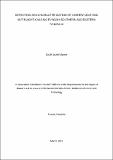Detection and characterization of cashew leaf and nut blight-causing fungi in Southern and Eastern Tanzania
Abstract
Cashew (Anacardium occidentale L.) is an important crop for export, income and nutrition in Tanzania. However, its productivity is not optimal due to a number of factors including, growing un-improved cashew genotypes, poor soil fertility, insect pests and diseases. Of these factors, Cashew Leaf and Nut Blight Disease (CLNBD) has been cited as among devastating factors for lower nut yields and quality. The present study investigated the CLNBD incidence and severity on farmers’ cashew fields in the eastern and southern zones of Tanzania and on artificially inoculated cashew elite hybrid seedlings in the screen house experiment at Tanzania Agricultural Research Institute (TARI)-Naliendele. Samples with disease symptoms collected from surveyed areas were used for detection and characterization of CLNBD-causing pathogens at TARI-Mikocheni. Results showed that there was significant difference (P<0.001) between the CLNBD incidence and severity in the surveyed locations. The highest (71.15%) CLNBD incidence was recorded in Mtwara while the lowest (31.21%) CLNBD incidence was recorded in Bagamoyo Districts. The results for the screen house experiment showed that 38 out of 52 cashew hybrids were tolerant to CLNBD implying their potential in breeding for resistant/tolerant cashew cultivars. The results also showed that CLNBD is caused by a complex of fungal species belonging to genera Botryosphaeria, Pestalotiopsis, Colletotrichum, Neofusicoccum and Lasiodiplodia. Further studies are recommended to study host range of the new fungal species identified in this study. The identified tolerant cashew genotypes are recommended for further screening in breeding programs for developing resistant varieties against CLNBD in Tanzania.

